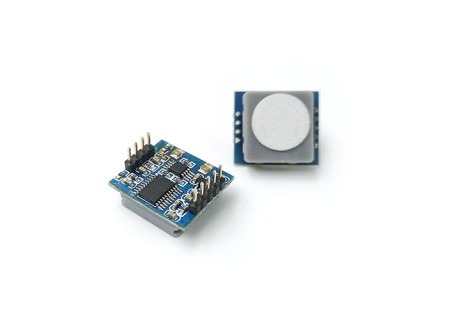Gas sensor for home

In recent years, the wave of intelligent home appliances has swept across, and leading home appliance companies have begun to build their own smart home appliance ecosystem. The first step in making home appliances smart is to use Gas sensor for home to accurately collect data and then perform intelligent calculation and processing. More and more home appliances are beginning to integrate various types of Gas sensors for home, adding intelligent sensing functions to cope with the market trend of intelligent and energy-saving home appliances.
Fosensor relies on its deep accumulation in the sensor field over the years and currently has a variety of sensor products used in home appliances in different scenarios, providing systematic sensor application solutions for smart home appliances.
1. Air conditioning products
Doors and windows need to be closed when using air conditioners. If used for a long time without ventilation, indoor air quality will deteriorate. Indoor carbon dioxide, TVOC, temperature and humidity are all factors that affect air quality. Most of the fresh air functions and air washing functions in smart air conditioners are improved by measuring the gas content that affects indoor air quality, and purifying the outdoor air into the room through external circulation devices and filtering devices to achieve indoor and outdoor air exchange. Or maintain good indoor air quality.
Carbon dioxide sensors, PM2.5 sensors, formaldehyde sensors, temperature and humidity sensors and other sensors can be integrated into smart air conditioners.
In addition to air quality sensors, smart air conditioners can also integrate human body sensing modules and refrigerant leakage detection modules.
2. Water heater products
Water heaters are one of the essential appliances for every household. With people's pursuit of quality life and the continuous development of technology, the water heater market has become more and more mature. In response to safety technical issues that consumers are concerned about, manufacturers are also constantly improving the safety performance of their products. Gas itself is flammable and explosive, and once it leaks, the consequences will be disastrous; secondly, when the gas is not fully burned, carbon monoxide will be produced, and leakage will harm human health and cause carbon monoxide poisoning.
For gas water heaters, the integrated gas and carbon monoxide sensor module can detect gas leaks in real time to ensure safety.
3. Purifiers, fresh air systems and other products
The intelligent fresh air system has now become an indispensable smart device in modern families. Now a mature intelligent air purifier design comes standard with wind pressure flow sensor, air quality sensor, PM2.5 sensor, carbon dioxide sensor, Formaldehyde sensor, temperature and humidity sensor, ozone sensor, etc. Similarly, these sensors are added to the host system of the fresh air system and controlled by each other. Through the setting of various parameters, functions such as automatic start and stop of the fresh air system and air volume adjustment can be realized.
4. Kitchen appliances
Intelligent hood: It can automatically identify the temperature of the fan-shaped areas at both ends of the gas stove through the temperature measurement module, and intelligently control it through algorithms to achieve real air volume adjustment with the smoke, achieving precise and automatic control of the switch and gear size of the range hood, truly liberating User hands.
5. Clean electrical products
Sensors are also indispensable in the various cleaning appliances spawned by the "lazy economy", such as vacuum cleaners, floor washers, sweeping robots, mite removers and other products. Among them, dust detection sensors, VOC detection sensors, temperature and humidity detection, etc. are all types of sensors commonly used in cleaning appliances.
6. Refrigerator products
The spoilage of food and the reproduction of bacteria and microorganisms are often accompanied by the release of organic volatiles. The VOC sensor in the refrigerator compartment, combined with the air circulation system of the refrigerator compartment, can effectively monitor organic volatiles in every corner of the refrigerator: such as those generated during the rotting process of food. Odor, rotten eggs, ammonia substances, nitrogen gases, sulfur and other substances.
Carbon dioxide gas can effectively inhibit the growth of aerobic bacteria and mold, so injecting a certain concentration of carbon dioxide gas can extend the preservation time of food. But at the same time, excessive carbon dioxide gas will also affect the quality of food, causing it to lose moisture and deteriorate its taste. The carbon dioxide sensor can use real-time detection of carbon dioxide gas in the refrigerator to maintain an appropriate amount of carbon dioxide content inside and extend the preservation time of food.







-450x320.jpg)
-450x320.jpg)

-450x320.jpg)
-450x320.jpg)